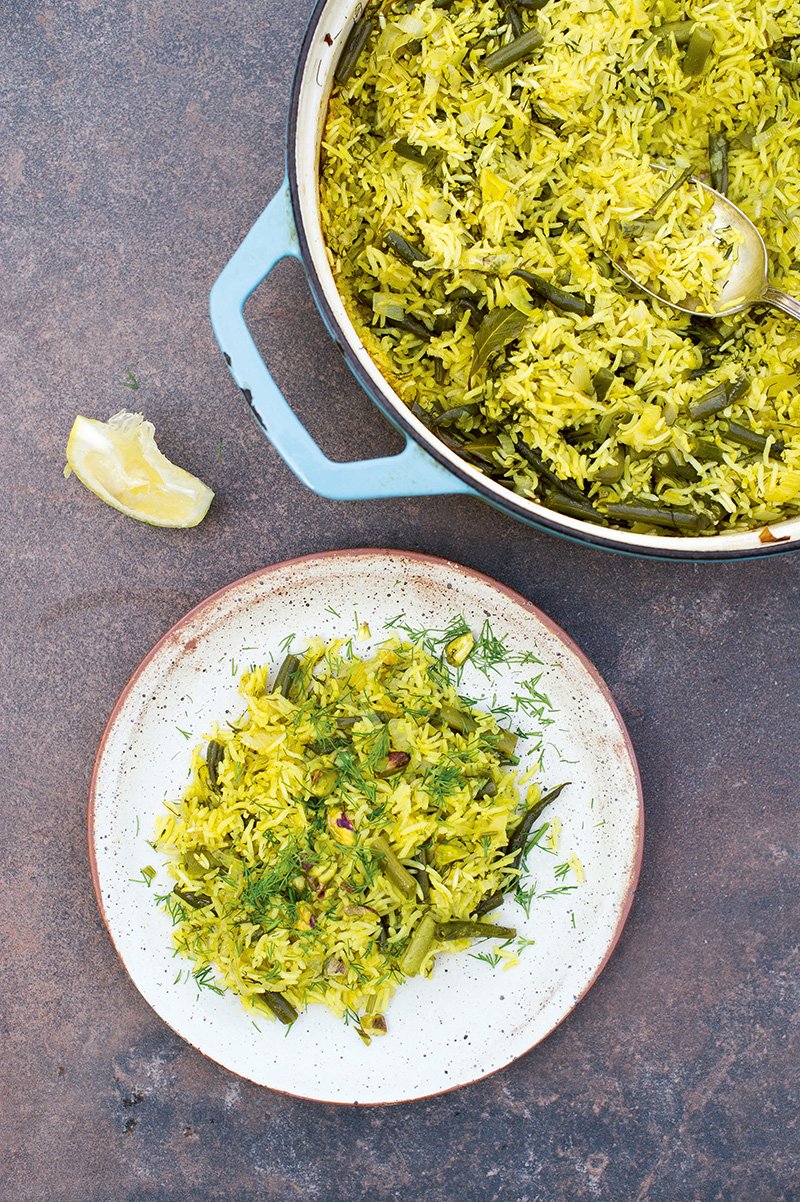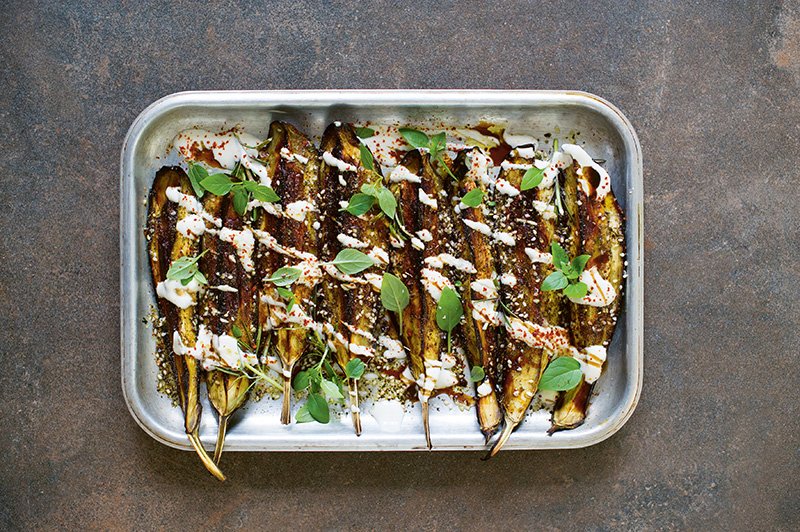By Ella Walker
“We don’t need herbs,” says Mark Diacono, a man who has just written an entire cookbook about them. He goes on to call them “unnecessary” and adds, quite heartlessly, that “we can perfectly merrily eat for the rest of our lives without herbs and we will live”.
However, they are also “the thing that makes the difference between feeding and eating,” he says, turning this dark tale into a light-filled parable. “It’s the unnecessary brilliance of [using herbs] that just makes you want to eat this delightful thing and get pleasure from it.”
And so, in conclusion, we actually do very much need herbs on our plates and growing windowsills, and Diacono, food writer, photographer and creator of Otter Farm – a nursery designed to encourage people to grow “unusual and forgotten food” – is very willing to share his affection for herbs.
“We’re the only species on earth that cooks,” he continues. “We’re doing it for two reasons. One is to transform foods into something that’s edible, you know, just plain old ‘I can eat that/That’s not going to kill me and/or I’m not going to lose my teeth trying to get through it’. But once you’ve got to that point, the rest really is about pleasure.”
Herbs provide “that little tweak” that can amp up a dish or morph its character slightly – take Diacono’s bread and butter pudding. Laced with standard thyme he says it takes on a “Novemberish” feel, whereas lemon thyme connotes April.
The problem is, most of us get “stuck” with the herbs that we use. Diacono nods to the usual suspects, mint, coriander, rosemary, thyme and parsley – which in a double-whammy of going through the motions, as we also tend to use them repeatedly in the same old ways. It means we’re accessing only a “tiny little sliver” orecipes the green fronds we could be scoffing.
“If you get to grips with herbs just a little – and they’re very easy to get to grips with – then it could change your food like nothing else,” says Diacono. “These are the clothes that dress up the plainer ingredients. You’re in for a fair bit of fun with them.”

Dill, lemon and green bean pilaf from Herb by Mark Diacono (Quadrille). Mark Diacono/PA.
Dill, Lemon and Green Bean Pilaf
(Serves 4–6)
300g (10oz) basmati rice
400ml (14fl oz) chicken or vegetable stock
30g (1oz) butter
1 onion, thinly sliced
3 garlic cloves, finely chopped
2 bay leaves
Big bunch of dill, stalks and leaves separated and both finely chopped
1 tsp ground cumin
1 tsp ground coriander
½ tsp ground turmeric
¼ tsp ground cinnamon
200g (7oz) green beans, stalk end trimmed (or use thin slices of courgette)
Finely grated zest of 1 unwaxed lemon
40g (1½oz) shelled pistachios (or use whole almonds), roughly chopped
Sea salt and freshly ground black pepper
Natural yoghurt and lemon wedges, to serve
Soak the rice in a bowl of cold water for 10 minutes, then drain well. Bring the stock to a bare simmer.
Melt the butter in a wide pan over a low-medium heat and cook the onion, garlic, bay leaves and dill stalks for 10 minutes until soft. Add the spices and half a teaspoon salt and cook for a minute.
Add the rice to the pan, along with the beans and half of the dill leaves, stirring for 30 seconds to coat well and so it doesn’t burn. Cover the rice with the hot stock, add the lemon zest and check the seasoning, adding salt and pepper to taste. Put the lid on and cook for five minutes over a high heat, then turn it down to the lowest heat and cook for 10 minutes until the stock is absorbed and the rice is just tender. Turn the heat off, remove the lid and place a tea towel over the pan, then return the lid and leave to rest for five minutes.
Fluff the rice with a fork, then scatter over the remaining dill and the nuts and serve immediately with yoghurt and lemon wedges on the side.
Rosemary and Basil Aubergines in Za’atar
(Serves 4)
4 aubergines (eggplant), quartered lengthways
4 tbsp olive oil
A few good sprigs of rosemary, broken into 3cm (1in) pieces
4 tbsp za’atar (see below)
Sea salt and freshly ground black pepper
For the za’atar:
(Makes a small jarful)
3 tbsp sesame seeds
1½ tbsp ground cumin
2 tbsp sumac
2 tbsp dried Mexican oregano, dried marjoram, oregano, savory or hyssop
1 tbsp salt
For the dressing:
50g (2oz) tahini
1 tbsp yoghurt
Juice of 1 lemon
2 garlic cloves, finely chopped
2 tbsp olive oil
To serve:
Pomegranate molasses
Hot sauce or chilli flakes
Handful of basil leaves
Make the za’atar. Lightly toast the sesame seeds in a pan over a medium heat, shuffling them around a bit to ensure they don’t turn too dark. Combine all the ingredients together with a mortar and pestle. Store in a sealed jar.
Preheat the oven to 200C.
Lay the aubergine quarters in a single layer on baking sheets, brush with oil, and sprinkle with salt and pepper. Place in the oven, turn the heat down to 180C, and cook for 20–25 minutes until tender and brown.
Make the dressing by whisking all the ingredients together with two tablespoons water; use a little more water if required, to reach a consistency of double cream.
Mix the rosemary, za’atar and a heavy grinding of pepper in a bowl. Remove the aubergines from the oven, top with the za’atar mix, drizzle with more oil and return to the oven for five minutes.
Drizzle with the tahini dressing, pomegranate molasses, hot sauce or chilli flakes and scatter with basil.
Herb: A Cook’s Companion by Mark Diacono is available now







Click here to change your cookie preferences